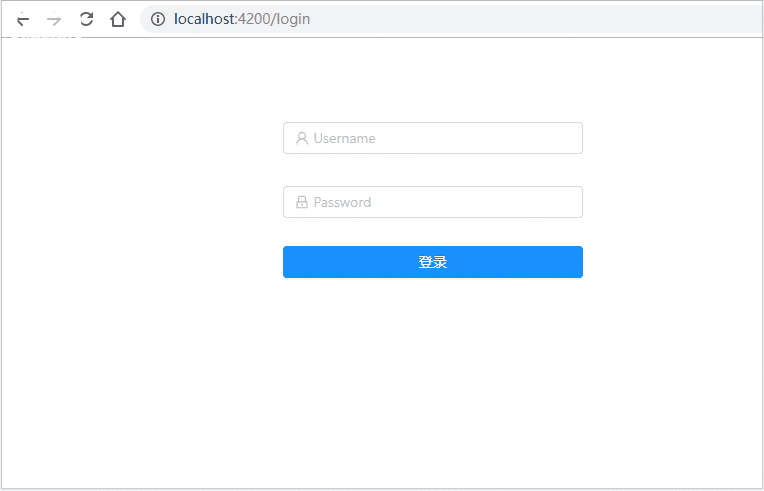本篇文章为大家展示了Angular8路由守卫的原理是什么,内容简明扼要并且容易理解,绝对能使你眼前一亮,通过这篇文章的详细介绍希望你能有所收获。
路由守卫
守卫,顾名思义,必须满足一定的条件得到许可方可通行,否则拒绝访问或者重定向。Angular中路由守卫可以借此处理一些权限问题,通常应用中存储了用户登录和用户权限信息,遇到路由导航时会进行验证是否可以跳转。
4种守卫类型
按照触发顺序依次为:canload(加载)、canActivate(进入)、canActivateChild(进入子路由)和canDeactivate(离开)。
一个所有守卫都是通过的守卫类:
import { Injectable } from '@angular/core'; import { CanActivate, Router, ActivatedRouteSnapshot, RouterStateSnapshot, CanActivateChild, CanLoad, CanDeactivate } from '@angular/router'; import { Route } from '@angular/compiler/src/core'; import { NewsComponent } from '../component/news/news.component'; @Injectable({ providedIn: 'root' }) export class AuthGuard implements CanActivate, CanActivateChild, CanLoad, CanDeactivate<any> { constructor( private router: Router ) { } canActivate(route: ActivatedRouteSnapshot, state: RouterStateSnapshot): boolean { // 权限控制逻辑如 是否登录/拥有访问权限 console.log('canActivate'); return true; } canDeactivate( component: NewsComponent, currentRoute: ActivatedRouteSnapshot, currentState: RouterStateSnapshot, nextState: RouterStateSnapshot) { console.log('canDeactivate'); return true; } canActivateChild() { // 返回false则导航将失败/取消 // 也可以写入具体的业务逻辑 console.log('canActivateChild'); return true; } canLoad(route: Route) { // 是否可以加载路由 console.log('canload'); return true; } }app-routing.module.ts
import { NgModule } from '@angular/core'; import { Routes, RouterModule } from '@angular/router'; import { ErrorComponent } from './error/error.component'; import { AuthGuard } from './core/auth-guard'; const routes: Routes = [ // 一般情况很少需要同时写多个守卫,如果有也是分开几个文件(针对复杂场景,否则一般使用canActivated足够) { path: '', canLoad: [AuthGuard], canActivate: [AuthGuard], canActivateChild: [ AuthGuard ], canDeactivate: [AuthGuard], loadChildren: () => import('./pages/pages.module').then(m => m.PagesModule) }, { path: 'error', component: ErrorComponent, data: { title: '参数错误或者地址不存在' } }, { path: '**', redirectTo: 'error', pathMatch: 'full' } ]; @NgModule({ imports: [RouterModule.forRoot(routes)], exports: [RouterModule] }) export class AppRoutingModule { }使用场景分析
1.canLoad
默认值为true,表明路由是否可以被加载,一般不会认为控制这个守卫逻辑,99.99%情况下,默认所有app模块下路由均允许canLoad
2.canActivate
是否允许进入该路由,此场景多为权限限制的情况下,比如客户未登录的情况下查询某些资料页面,在此方法中去判断客户是否登陆,如未登录则强制导航到登陆页或者提示无权限,即将返回等信息提示。
3.canActivateChild
是否可以导航子路由,同一个路由不会同时设置canActivate为true,canActivateChild为false的情况,此外,这个使用场景很苛刻,尤其是懒加载路由模式下,暂时未使用到设置为false的场景。
4.CanDeactivate
路由离开的时候进行触发的守卫,使用场景比较经典,通常是某些页面比如表单页面填写的内容需要保存,客户突然跳转其它页面或者浏览器点击后退等改变地址的操作,可以在守卫中增加弹窗提示用户正在试图离开当前页面,数据还未保存 等提示。
场景模拟
登录判断
前期准备:login组件;配置login路由
因为login是独立一个页面,所以app.component.html应该只会剩余一个路由导航
<!-- NG-ZORRO --> <router-outlet></router-outlet>
取而代之的是pages.component.html页面中要加入header和footer部分变为如下:
<app-header></app-header> <div nz-row class="main"> <div nz-col nzSpan="24"> <router-outlet></router-outlet> </div> </div> <app-footer></app-footer>
app-routing.module.ts 中路由配置2种模式分析:
// 非懒加载模式 import { NgModule } from '@angular/core'; import { Routes, RouterModule } from '@angular/router'; import { ErrorComponent } from './error/error.component'; import { AuthGuard } from './core/auth-guard'; import { LoginComponent } from './component/login/login.component'; import { PagesComponent } from './pages/pages.component'; import { IndexComponent } from './component/index/index.component'; const routes: Routes = [ // 一般情况很少需要同时写多个守卫,如果有也是分开几个文件(针对复杂场景,否则一般使用canActivated足够) { path: '', canLoad: [AuthGuard], canActivate: [AuthGuard], canActivateChild: [ AuthGuard ], canDeactivate: [AuthGuard], component: PagesComponent, children: [ { path: 'index', component: IndexComponent } // ... ] // loadChildren: () => import('./pages/pages.module').then(m => m.PagesModule) }, { path: 'login', component: LoginComponent, data: { title: '登录' } }, { path: 'error', component: ErrorComponent, data: { title: '参数错误或者地址不存在' } }, { path: '**', redirectTo: 'error', pathMatch: 'full' } ]; @NgModule({ imports: [RouterModule.forRoot(routes)], exports: [RouterModule] }) export class AppRoutingModule { }非懒加载模式下,想要pages组件能够正常显示切换的路由和固定头部足部,路由只能像上述这样配置,也就是所有组件都在app模块中声明,显然不是很推荐这种模式,切换回懒加载模式:
{ path: '', canLoad: [AuthGuard], canActivate: [AuthGuard], canActivateChild: [ AuthGuard ], canDeactivate: [AuthGuard], loadChildren: () => import('./pages/pages.module').then(m => m.PagesModule) },pages-routing.module.ts
初始模板:
const routes: Routes = [ { path: '', redirectTo: 'index', pathMatch: 'full' }, { path: 'index', component: IndexComponent, data: { title: '公司主页' } }, { path: 'about', component: AboutComponent, data: { title: '关于我们' } }, { path: 'contact', component: ContactComponent, data: { title: '联系我们' } }, { path: 'news', canDeactivate: [AuthGuard], loadChildren: () => import('../component/news/news.module').then(m => m.NewsModule) }, ]浏览器截图:

明明我们的html写了头部和底部组件却没显示?
路由的本质:根据配置的path路径去加载组件或者模块,此处我们是懒加载了路由,根据路由模块再去加载不同组件,唯独缺少了加载了pages组件,其实理解整个并不难,index.html中有个<app-root></app-root>,这就表明app组件被直接插入了dom中,反观pages组件,根本不存在直接插进dom的情况,所以这个组件根本没被加载,验证我们的猜想很简单:
export class PagesComponent implements OnInit { constructor() { } ngOnInit() { alert(); } }经过刷新页面,alert()窗口并没有出现~,可想而知,直接通过路由模块去加载了对应组件;其实我们想要的效果就是之前改造前的app.component.html效果,所以路由配置要参照更改:
const routes: Routes = [ { path: '', component: PagesComponent, children: [ { path: '', redirectTo: 'index', pathMatch: 'full' }, { path: 'index', component: IndexComponent, data: { title: '公司主页' } }, { path: 'about', component: AboutComponent, data: { title: '关于我们' } }, { path: 'contact', component: ContactComponent, data: { title: '联系我们' } }, { path: 'news', canDeactivate: [AuthGuard], loadChildren: () => import('../component/news/news.module').then(m => m.NewsModule) }, ] } ];
这样写,pages组件就被加载了,重回正题,差点回不来,我们在登录组件中写了简单的登录逻辑:
import { Component, OnInit } from '@angular/core'; import { FormGroup, FormControl, Validators, FormBuilder } from '@angular/forms'; import { Router } from '@angular/router'; @Component({ selector: 'app-login', templateUrl: './login.component.html', styleUrls: ['./login.component.scss'] }) export class LoginComponent implements OnInit { loginForm: FormGroup; constructor( private fb: FormBuilder, private router: Router ) { } ngOnInit() { this.loginForm = this.fb.group({ loginName: ['', [Validators.required]], password: ['', [Validators.required]] }); console.log(this.loginForm); } loginSubmit(event, value) { if (this.loginForm.valid) { window.localStorage.setItem('loginfo', JSON.stringify(this.loginForm.value)); this.router.navigateByUrl('index'); } } }守卫中:
canActivate(route: ActivatedRouteSnapshot, state: RouterStateSnapshot): boolean { // 权限控制逻辑如 是否登录/拥有访问权限 console.log('canActivate', route); const isLogin = window.localStorage.getItem('loginfo') ? true : false; if (!isLogin) { console.log('login'); this.router.navigateByUrl('login'); } return true; }
路由离开(选定应用的组件是contact组件):
canDeactivate( component: ContactComponent, currentRoute: ActivatedRouteSnapshot, currentState: RouterStateSnapshot, nextState: RouterStateSnapshot): Observable<boolean> | Promise<boolean> | boolean { console.log('canDeactivate'); return component.pageLeave(); }{ path: 'contact', canDeactivate: [AuthGuard], component: ContactComponent, data: { title: '联系我们' } }pageLeave(): Observable<boolean> { return new Observable(ob => { if (!this.isSaven) { this.modal.warning({ nzTitle: '正在离开,是否需要保存改动的数据?', nzOnOk: () => { // 保存数据 ob.next(false); alert('is saving'); this.isSaven = true; }, nzCancelText: '取消', nzOnCancel: () => { ob.next(true); } }); } else { ob.next(true); } }); }上述内容就是Angular8路由守卫的原理是什么,你们学到知识或技能了吗?如果还想学到更多技能或者丰富自己的知识储备,欢迎关注亿速云行业资讯频道。
免责声明:本站发布的内容(图片、视频和文字)以原创、转载和分享为主,文章观点不代表本网站立场,如果涉及侵权请联系站长邮箱:is@yisu.com进行举报,并提供相关证据,一经查实,将立刻删除涉嫌侵权内容。